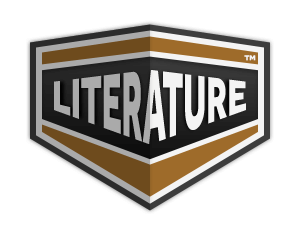Two Great Painters
"Two Great Painters" by James Baldwin is an essay that reflects on the lives and works of two influential artists, Henri Matisse and Pablo Picasso. Baldwin explores their artistic philosophies and styles, delving into how their experiences and cultural backgrounds shaped their creative expressions. The essay serves as a meditation on art, individuality, and the complexities of the human experience, highlighting Baldwin's deep appreciation for the emotional and aesthetic power of painting. Through his insightful analysis, Baldwin invites readers to consider the broader implications of art in society and its capacity to transcend time and cultural boundaries.
There was once a painter whose name was Zeuxis. [Footnote: Zeuxis (pro. zuke'sis).] He could paint pictures so life-like that they were mistaken for the real things which they represented. At one time he painted the picture of some fruit which was so real that the birds flew down and pecked at it. This made him very proud of his skill. "I am the only man in the world who can paint a picture so true to life," he said. There was another famous artist whose name was Parrhasius. [Footnote: Parrhasius (pro. pa ra'shl us).] When he heard of the boast which Zeuxis had made, he said to himself, "I will see what I can do." So he painted a beautiful picture which seemed to be covered with a curtain. Then he invited Zeuxis to come and see it. Zeuxis looked at it closely. "Draw the curtain aside and show us the picture," he said. Parrhasius laughed and answered, "The curtain is the picture." "Well," said Zeuxis, "you have beaten me this time, and I shall boast no more. I deceived only the birds, but you have deceived me, a painter." Some time after this, Zeuxis painted another wonderful picture. It was that of a boy carrying a basket of ripe red cherries. When he hung this painting outside of his door, some birds flew down and tried to carry the cherries away. "Ah! this picture is a failure," he said. "For if the boy had been as well painted as the cherries, the birds would have been afraid to come near him."
Translation
Translate and read this book in other languages:
Select another language:
- - Select -
- 简体中文 (Chinese - Simplified)
- 繁體中文 (Chinese - Traditional)
- Español (Spanish)
- Esperanto (Esperanto)
- 日本語 (Japanese)
- Português (Portuguese)
- Deutsch (German)
- العربية (Arabic)
- Français (French)
- Русский (Russian)
- ಕನ್ನಡ (Kannada)
- 한국어 (Korean)
- עברית (Hebrew)
- Gaeilge (Irish)
- Українська (Ukrainian)
- اردو (Urdu)
- Magyar (Hungarian)
- मानक हिन्दी (Hindi)
- Indonesia (Indonesian)
- Italiano (Italian)
- தமிழ் (Tamil)
- Türkçe (Turkish)
- తెలుగు (Telugu)
- ภาษาไทย (Thai)
- Tiếng Việt (Vietnamese)
- Čeština (Czech)
- Polski (Polish)
- Bahasa Indonesia (Indonesian)
- Românește (Romanian)
- Nederlands (Dutch)
- Ελληνικά (Greek)
- Latinum (Latin)
- Svenska (Swedish)
- Dansk (Danish)
- Suomi (Finnish)
- فارسی (Persian)
- ייִדיש (Yiddish)
- հայերեն (Armenian)
- Norsk (Norwegian)
- English (English)
Citation
Use the citation below to add this book to your bibliography:
Style:MLAChicagoAPA
"Two Great Painters Books." Literature.com. STANDS4 LLC, 2025. Web. 22 Feb. 2025. <https://www.literature.com/book/two_great_painters_5328>.








Discuss this Two Great Painters book with the community:
Report Comment
We're doing our best to make sure our content is useful, accurate and safe.
If by any chance you spot an inappropriate comment while navigating through our website please use this form to let us know, and we'll take care of it shortly.
Attachment
You need to be logged in to favorite.
Log In